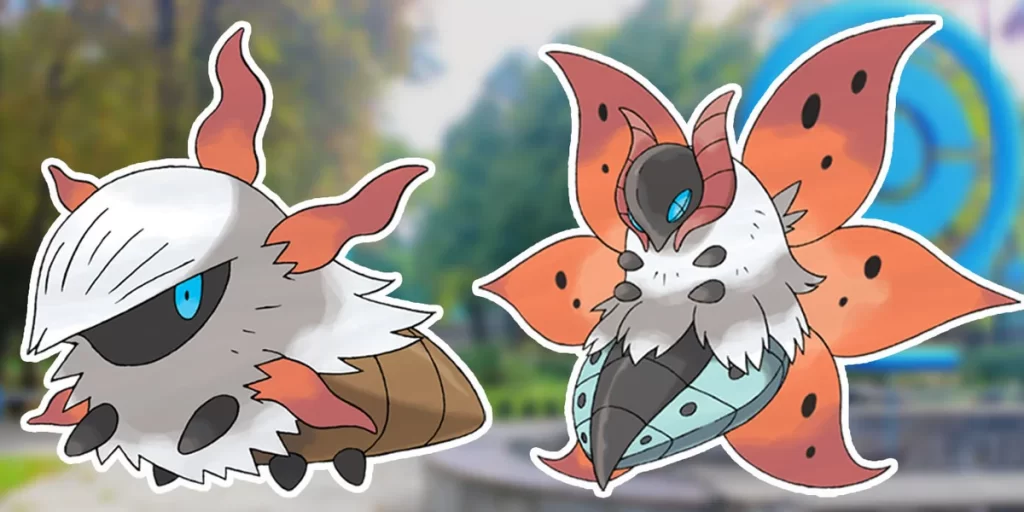How to Evolve Larvesta: A Guide to Obtaining Volcarona
Larvesta, the unique Bug/Fire-type Pokémon, has captured the hearts of many Pokémon fans since its introduction in Generation V. Its striking appearance, with a flame-like mane and horns, and its powerful evolution into the majestic Volcarona make it a highly sought-after addition to any Pokémon team. However, evolving Larvesta comes with its own challenges, as it requires reaching a relatively high level compared to most other Bug-type Pokémon. In this comprehensive guide, we’ll explore everything you need to know about evolving Larvesta, from where to find it to the strategies for leveling it up efficiently. We’ll also provide a detailed FAQ section and a summary table with key information.
Understanding Larvesta’s Evolution
Larvesta is a unique Pokémon in the sense that it evolves into its final form, Volcarona, at a relatively high level compared to most other Bug-type Pokémon. Specifically, Larvesta evolves into Volcarona at level 59. This means that you’ll need to put in a significant amount of time and effort to train your Larvesta before it can reach its full potential.Volcarona is a powerful Bug/Fire-type Pokémon with impressive stats, particularly in Special Attack and Speed. Its high Special Attack allows it to deal devastating damage with its fire-based special moves, while its Speed ensures that it can often strike first in battles. However, Volcarona is also vulnerable to Rock-type attacks, which deal quadruple damage to it.
Where to Find Larvesta
Larvesta can be found in various locations across the Pokémon games, but its exact location depends on the specific game you’re playing. In Pokémon Scarlet and Violet, Larvesta can be found in the Asado Desert near Cascarrafa and Port Marinada. They can be seen crawling along the sand or on top of the mesas, which can only be reached if your Koraidon/Miraidon has the ability to climb walls.In previous generations, Larvesta could be obtained by hatching an Egg. The Egg would typically be given to the player by an NPC or found in a specific location. Once hatched, the Larvesta would be ready to train and evolve into Volcarona.
Strategies for Evolving Larvesta
Evolving Larvesta into Volcarona requires a significant amount of time and effort, but there are several strategies you can employ to make the process more efficient:
- Use Rare Candies or Exp. Candies: The quickest way to level up Larvesta is to feed it Rare Candies or Exp. Candies, particularly Exp. Candy L or Exp. Candy M. These items can be obtained by winning Tera Raids or through other means, depending on the game you’re playing.
- Participate in Tera Raids: Tera Raids are a great way to earn Exp. Candies and other valuable items. Look for 4-Star Tera Raids, as these are more likely to reward you with Exp. Candy L or Exp. Candy M.
- Battle Trainers and Wild Pokémon: While using Rare Candies or Exp. Candies is the fastest way to level up Larvesta, battling trainers and wild Pokémon can also contribute to its growth. Make sure to keep Larvesta in your active party to ensure it gains experience from every battle.
- Use Exp. Share: If available in the game you’re playing, make use of the Exp. Share item or ability to distribute experience points among your entire party, allowing Larvesta to gain levels more quickly.
- Optimize Larvesta’s Nature and Moveset: While not directly related to evolving Larvesta, optimizing its Nature and moveset can make it more effective in battles. The best Natures for Larvesta are Timid (+Spd, -Attk) or Modest (+Sp. Attk, -Attk), as Volcarona’s best moves are Special Attacks. Ensure that Larvesta has access to powerful fire-based special moves to take advantage of its high Special Attack stat.
Summary Table of Key Information
| Characteristic | Value |
|---|---|
| Larvesta’s Evolution Level | 59 |
| Larvesta’s Type | Bug/Fire |
| Volcarona’s Strengths | Psychic, Grass, Dark, Bug, Ice, Steel |
| Volcarona’s Weaknesses | Rock (x4 damage), Water, Flying |
| Volcarona’s Resistances | Fairy, Ice, Steel, Bug, Grass (1/4 damage), Fighting |
| Volcarona’s Base Stat Total | 550 |
| Best Nature for Larvesta/Volcarona | Timid (+Spd, -Attk) or Modest (+Sp. Attk, -Attk) |
For more information on Larvesta and its evolution, you can refer to Bulbapedia.
FAQ Section
1. What level does Larvesta evolve into Volcarona?
Larvesta evolves into Volcarona at level 59.
2. Is there a way to speed up Larvesta’s evolution?
Yes, you can use Rare Candies or Exp. Candies to quickly level up Larvesta. Participating in Tera Raids and battling trainers and wild Pokémon can also contribute to its growth.
3. What are Volcarona’s strengths and weaknesses?
Volcarona is strong against Psychic, Grass, Dark, Bug, Ice, and Steel-type Pokémon. It is weak to Rock (x4 damage), Water, and Flying-type attacks. It resists Fairy, Ice, Steel, Bug, Grass (1/4 damage), and Fighting-type moves.
4. What is the best Nature for Larvesta and Volcarona?
The best Natures for Larvesta and Volcarona are Timid (+Spd, -Attk) or Modest (+Sp. Attk, -Attk), as Volcarona’s best moves are Special Attacks.
5. Where can I find Larvesta in the Pokémon games?
In Pokémon Scarlet and Violet, Larvesta can be found in the Asado Desert near Cascarrafa and Port Marinada. In previous generations, Larvesta could be obtained by hatching an Egg given by an NPC or found in a specific location.
Conclusion
Evolving Larvesta into Volcarona is a challenging but rewarding process that requires patience and dedication. By following the strategies outlined in this guide, such as using Rare Candies or Exp. Candies, participating in Tera Raids, and optimizing Larvesta’s Nature and moveset, you can increase your chances of successfully evolving your Larvesta into the powerful Volcarona. With its impressive stats and unique Bug/Fire-type combination, Volcarona is a valuable addition to any Pokémon team, making the effort well worth it for dedicated Pokémon trainers.



